Come to the Jade Dragon Snow Mountain--Yunnan Parent-Child Tour
June 18-22, 2012. A family of three went on a five-day tour of Yunnan's "Kunming-Dali-Lijiang". My son was 11 years old and innocent!
Day 1 Dali Ancient City-Lijiang Guanyin Gorge-Lijiang Ancient City
1 Dali Ancient City--One of the first batch of 24 historical and cultural cities in China.
The ancient city of Dali is located at the foot of the beautiful Cangshan Mountain in the western part of Yunnan Province. It is also known as Ye Yu City and Zi City. The ancient city dates back to the Tianbao Period of the Tang Dynasty and was the capital of the ancient Nanzhao Kingdom (Tang Dynasty) and Dali Kingdom (Song Dynasty). The ancient city of Dali was the political, economic and cultural center of Yunnan during its more than 500 years of history in the Tang and Song Dynasties. There are 14 key cultural relics protection units at or above the municipal level in the ancient city, carrying Dali's historical culture, religious culture, and ethnic culture. It is the core tourist area of Dali.

In the first year of Bao of the Southern Song Dynasty (1253), the Yuan Dynasty destroyed Dali State and the city was destroyed. In the 15th year of Hongwu of the Ming Dynasty (1382), the Ming army captured Dali and built a new prefecture, which is now the ancient city of Dali.

Dali Ancient City South Tower
The south tower is called Shuanghe Tower and also called Cheng 'en Tower. South Gate is the first of the four gates of the ancient city. It was built in the 15th year of Hongwu of the Ming Dynasty (1382). It is the oldest and majestic building in the ancient city and the symbol and symbol of the ancient city of Dali. The ancient city wall is about 1500 meters long, 6 meters high and 12 meters thick on all four sides. The word "Dali" on the city gate was personally mentioned by Guo Moruo when he visited Dali in 1961."Dali" is the national name, which means "governing Dali greatly, enriching the country and rejuvenating the country".

Step into the ancient city from the South Gate

This is a place suitable for life. The pace of local life is very slow, the sun is shining, and the temperature is very suitable. It is very pleasant to stroll around small shops in the ancient city and look at ancient buildings.
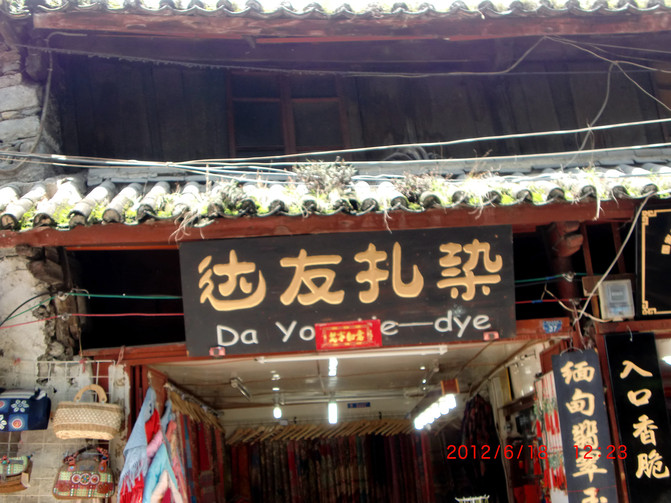

President's military forces and military forces, Grand Marshal's Mansion
Walking more than a hundred meters north from the south gate of the ancient city of Dali, there is a house on the west side of the street that is completely different from the neighboring houses. The plaque with gold characters on a blue background is particularly solemn against the blue sky and the Cangshan Mountains. This group of buildings truly records an epic historical event in which the people of western Yunnan bravely resisted the Qing Dynasty under the leadership of Du Wenxiu, a Hui nationality.

Wuhualou
Wuhua Tower was originally the state guesthouse of King Nanzhao. When Kublai Khan, the Emperor Shizu of the Yuan Dynasty, conquered Dali, he was stationed in front of the building. In the early years of the Ming Dynasty, Wuhua Tower was burned down during the war. During the Hongwu period of the Ming Dynasty, the ancient city of Dali was rebuilt. The modern Wuhua Building was rebuilt in 1998. It is a four-story building more than 10 meters tall. The lower floor is a pedestal and the upper three floors are buildings. Wuhua Tower is one of the landmark buildings in the ancient city of Dali.

Red Longjing: Located in the southwest of Dali Ancient City, it starts from the west wall of the ancient city in the west and connects to Fuxing Road in the east. It is only a few hundred meters long. Named the neighborhood after the well.

In recent years, Red Longjing has been particularly popular among tourists and has become a hot spot in the ancient city of Dali. The reason why Red Longjing is favored by tourists is that there is a clear stream flowing all year round, forming a beautiful scenery of "clear spring stones flowing upward".

Xingmen: It comes from Confucianism and represents the meaning that literary stars in the sky gather at this threshold.

Take a photo with Peacock

Wucheng Gate: Wucheng Temple, referred to as "Wu Temple", was formerly known as "Taigong Temple". It sacrificed Jiang Taigong and 64 good generals in the past dynasties. Dali's martial arts temple was built in the 17th year of Hongwu of the Ming Dynasty. The martial arts temple, also known as Guandi Temple, is a symbol of Dali's martial arts culture and wealth.


guandi temple

Funa Sihai

Visiting the ancient city of Dali






foreign Street
Foreign Street, formerly known as "Guguo Road", was named in memory of the Yunnan people's opposition to Yuan Shikai's declaration of emperor in the early Republic of China and the rise of troops to protect the country. "Huguo Road" runs east (west), has a total length of 1200 meters and a width of 7 meters, and is paved with bluestone slabs. The most prosperous one is the middle section, with a total length of 185.6 meters. It is one of the earliest and most well-known foreign streets in China.

After the reform and opening up, the Hongshan Tea Hotel on Huguo Road in the ancient city was designated as a foreign-related hotel, and Huguo Road became a distribution center for foreign tourists in Dali. With the development of tourism, the number of tourists is increasing day by day, with foreign guests gathering, some for leisure tours, some for tasting famous foods, some for working, and looking for girlfriends. They each do their best and make it lively and peaceful. Chinese and Western flavor shops, tea stalls, jewelry shops, antique shops, tie-dye shops, galleries, and all walks of life have sprung up. The shops are lined on both sides, and the eyes are dazzling, making it a famous Dali Foreign Street at home and abroad.
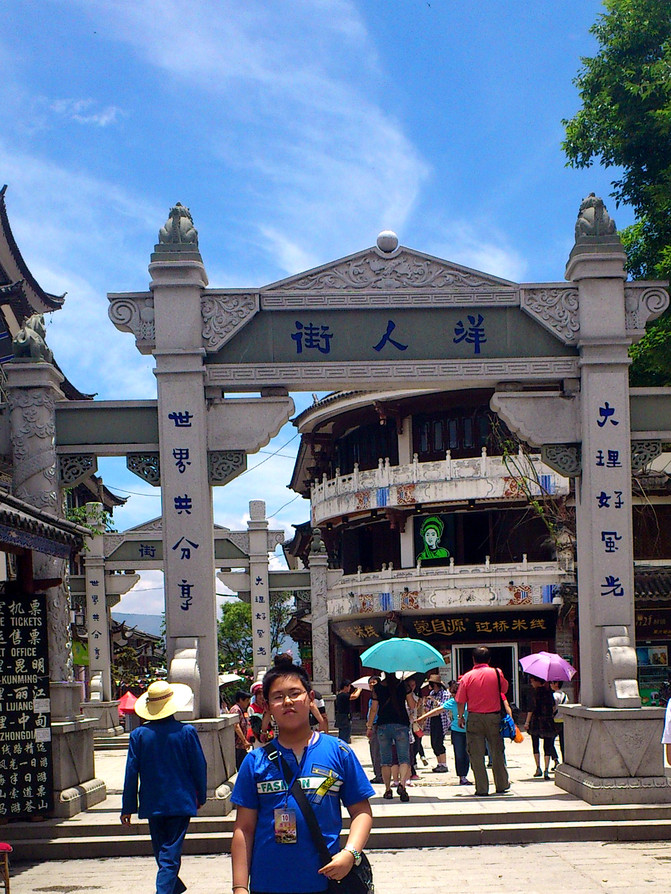
Dali has been a gathering place for the Bai people since ancient times.

Chengxinjing

roasted milk fan

2. Guanyin Gorge-the first scene in Lijiang
Guanyin Gorge Scenic Area is the entrance of Yulong Pass, one of the six major passes in Lijiang Bazi. It is located at the "Yulong Pass" pass of the three major passes in Lijiang Bazi. It is known as the "First Scenic Spot in Lijiang". Lijiang Guanyin Gorge is a scenic spot based on natural landscapes such as mountains and rivers, canyons, forests, lakes, etc., and integrated with cultural landscapes such as Tea Horse Ancient Street, Naxi villages, folk customs, and religious customs. The long Qiutang Road in Xiongguan, and the leisurely Tea Horse Yunnan and Tibet "is a portrayal of Lijiang Guanyin Gorge. It can be said to be the first dangerous fortress on the Dian-Tibet route of the Ancient Tea Horse Road. Xu Xiake entered Lijiang from this time and described Qiutang Pass as the" Key to Lijun "and entered this" Key to Lijun ". You enter the Gate of Lijiang. Only by entering this gate can you arrive at Lijiang from the main entrance.
It is 2578 kilometers away from Beijing and has an altitude of 2230 meters

The first is the "Ancient Tea Horse Road" at the entrance. The Ancient Tea Horse Road is a private international trade channel in southwest China that uses horse gangs as the main means of transportation.
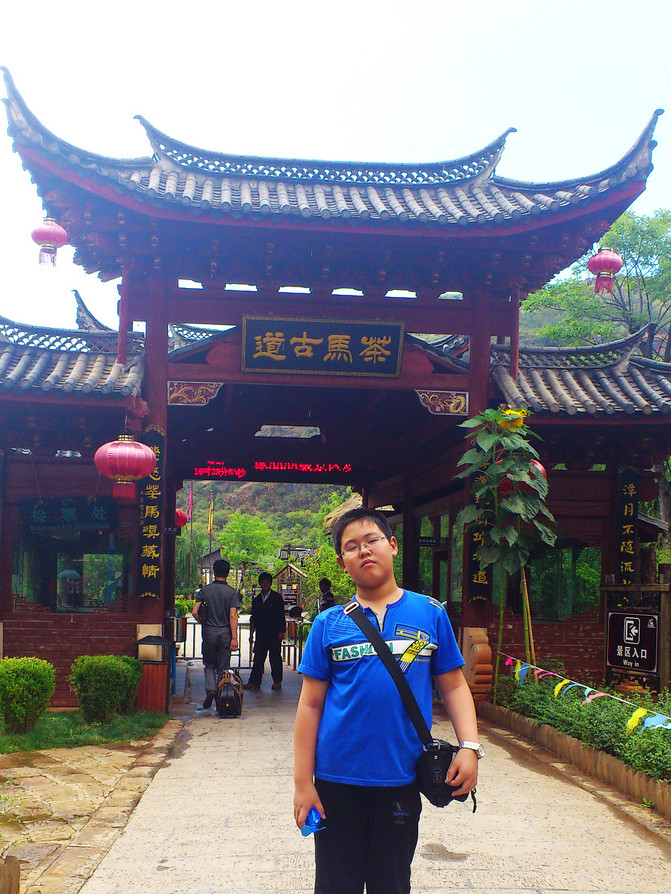
It originated from the tea-horse exchange in the ancient southwest border. It flourished in the Tang and Song Dynasties and flourished in the Ming and Qing Dynasties. It can be divided into Sichuan-Tibet and Dian-Tibet. Guanyin Gorge View is the only pass and military fortress on the ancient Tea Horse Ancient Road to Tibet from Lijiang to Tibet on the Dian-Tibet Line.

Liangma Bridge: Liangma Bridge was built by local people for the convenience of horse gangs on the ancient tea-horse road. After passing through the ancient tea-horse road, and then crossing the Mujia Bridge, you will reach the Mujia Courtyard. This was the tax inspection office set up here by Mu Tusi.

Mujia Bieyuan: Located in the Guanyin Gorge Scenic Area of Lijiang, it was the tax inspection office set up here by the Lijiang local emperor Mu's Tusi. It was simple and unique. The architectural form of the courtyard is a typical Naxi four-in-one courtyard architectural style. Its beautifully carved Liuhe Gate, beautiful and generous patio paving, and hanging fish rich in meaning all reflect the wisdom and aesthetics of the Naxi people.

Show off officers and soldiers to catch bandits


This should be Naxi writing, right?

Xiake Pavilion: This is a place where Xu Xiake has been. In 1639, Xu Xiake set out from Dali to Lijiang at the invitation of Tusi Muzeng and traveled in Lijiang for 15 days, because this was the only entry point for Xu Xiake to enter Lijiang Bazi from Dali and Heqing north. It is said that Xu Xiake entered Lijiang that year. Xiake Pavilion was where he stayed, and later "Xiake Pavilion" was built in his memory. He also made detailed records in "Xu Xiake's Travels" and wrote a magnificent chapter of "The Key to the True Beauty of this Mountain". This is the best location to get a close view of Guanyin Gorge Scenic Area.

Walking through the bustling market, the greenery is getting stronger, with green and dark green mixed, and wild flowers fragrant; weeping willows are reflected in the quiet lake water, and the sky is up and down, creating a vast expanse of green.


Through a dense bamboo forest is a 385-meter-long mountain tunnel, which is passed by an electric train. "The mountains and heavy waters are restored, and there is no way to go, and the willows are dark and flowers are bright.""The pool and moon do not follow the running water, but the wind in the gorges comes with the people."

After passing the tunnel, you will reach the Guanyin Gorge for more than a hundred meters. There is a stone tablet written: "Lijiang Guanyin Gorge".

Lijiang Guanyin Waterfall: The canyon is quiet and peaceful, with peaks standing tall, and the sound of water can be heard gradually. Turning around the mountain peak, I saw a waterfall flying straight down. The rapids were sharp and sharp, and there was indeed the possibility of the Milky Way falling into the sky. This is Lijiang Guanyin Waterfall. Guanyin Waterfall is at the end. With the rolling rapids, I return with the divine light of the clutch. Climbing the mountain along the stone steps, I can see the horizontal branches covering the top. It is still dark in the day. The sparse strips reflect each other. Sometimes I see the sun, with strange flowers and grasses competing for wonders and beauty. The mountain breeze is fresh and refreshing.


Immortal World Holy Land

wishing pavilion

water and sky

Pass through Yulongguan Tea Horse Ancient Street

After you change the customs clearance documents here, you can go to Lijiang Ancient City


3. In the evening, enter the ancient city of Lijiang
Stay at Xiya Hotel



Visiting the ancient city at night
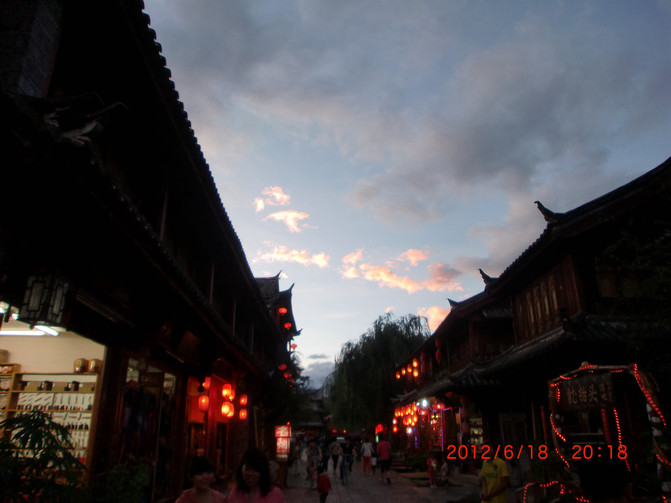



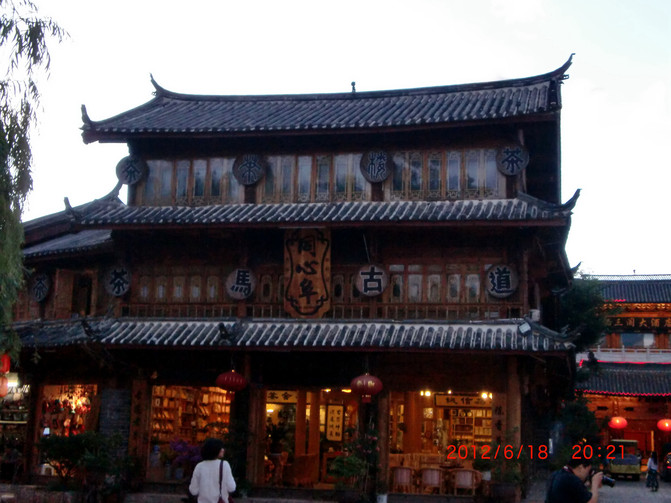


Day 2: Jade Dragon Snow Mountain-Ancient City of Lijiang
1、Yulong Snow Mountain Lanyue Valley Scenic Area

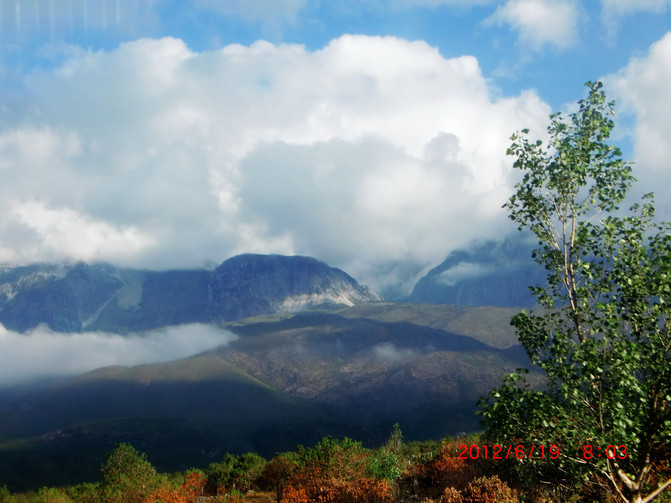




Blue Moon Valley: Blue Moon Valley is located at the eastern foot of the Yulong Snow Mountain in Yulong Naxi Autonomous County, Lijiang City, Yunnan Province. It is commonly known as the "Baishui River". It is famous for its majestic and magnificent snow-capped mountains, blue jade-like lakes and beautiful canyons. It is named for its blue lake water and crescent-shaped valleys. It is said to be the prototype of the Blue Moon Valley in British writer James Hilton's "The Disappeared Horizon".


Yuye Lake The water quality of Yuye Lake is very clear. You can see the pure white water bottom at a glance. The blue lake water reflects the Jade Dragon Snow Mountain not far away. It looks like a wonderful landscape picture, like "half an acre of square ponds open, and the sky and clouds wander together."






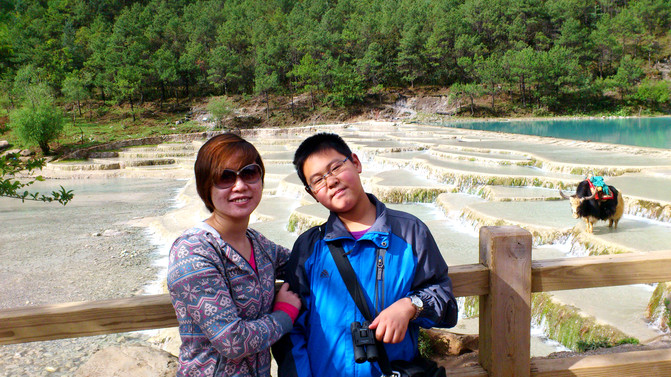














Tingtao Lake The water drop in Tingtao Lake is very large. The stream flows through it like a flying waterfall, making a sound of "ding", just like singing and singing music. When you stay by the lake, you can hear bursts of water mixed with the sound of pine waves, just like the beautiful scenery written in "The sound of the stream is on the panasonic, and the sound of the waves is on the pine trees".




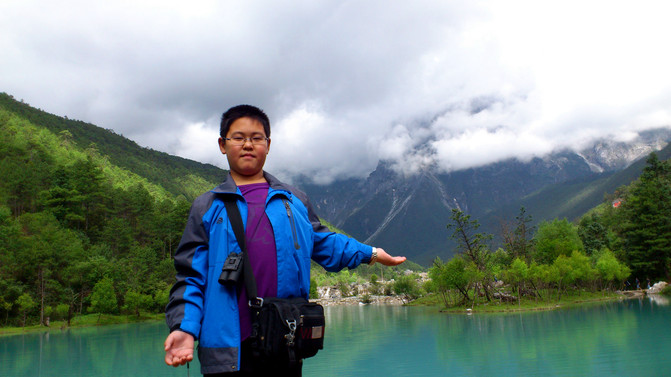
2. Impression Lijiang Performance-the highest live performance in the world at an altitude of 3050 meters
"Impression·Lijiang" is a large-scale real-life performance with original ecology. It was co-directed by Zhang Yimou, China's most influential director, together with Wang Chaoge and Fan Yue. It took more than a year and was completed after hundreds of modifications. The performance theater is located at an altitude of 3050 meters. The world's highest real-life performance venue-Ganhaizi of the Yulong Snow Mountain Scenic Area-is currently the only real-life performance held during the day.


"Impression·Snow Mountain" is set on a snowy mountain,

Drawing on the aura of heaven and earth, taking the great achievements of nature, using folk culture as the carrier, and using large-scale freehand brushwork, in the world's highest performance venue at an altitude of 3100 meters, let the reality and shock of life be so close to everyone.



Actors come to the audience to interact with the audience


The galloping horse came to the back of the audience


The Yulong Snow Mountain is still shrouded in clouds and mist
Being in the large-scale performance venue under the Yulong Snow Mountain, as the performance began, it was unconsciously attracted. I truly felt the cleansing of the soul, the passage of the soul, and the visual beauty. It was a feeling that I had never experienced before. The feeling of unity between man and nature fills my heart. It's so good!


3. Yushui Village-is the Dongba Holy Land in the central area of the Naxi People
Yushuizhai is the Dongba holy land in the central area of the Naxi people and the origin of the ancient city of Lijiang. The Nature Conservancy of the United States designated Yushuizhai as the inheritance base of Dongba culture, Baisha Xile music inheritance base and Leba dance inheritance base to carry out excavation, sorting, inheritance, research, and display of the ancient culture of the Naxi nation.

The Shenquan is actually the snow melt water on the top of the Yulong Snow Mountain. It surges out after penetrating 2400 meters of rocks.


A spring water as big as the Shenlong Sandui water flows down the hillside and folds into three stacks. The Naxi people's worship of the dragon dragon Sandieshui was integrated into life. They transformed their domestic water into the appearance of Sandieshui divine springs; they put the "Sandieshui" on a family banquet, and divided the tableware into three stacks by high and low plates, bowls, and hot pot; The "Sandieshui" was built into a Naxi people's courtyard, and Naxi women also wore the "Sandieshui" on their bodies.

4. Black Dragon Pool
Black Dragon Pool, also known as Yuquan Park, was formerly known as Yuquan Dragon King Temple. It was built in the second year of Qianlong (1737). Later, it was rebuilt in the 60th year of Qianlong and the 18th year of Guangxu. It was named after it was granted "Dragon God" by the emperors of the Jiaqing and Guangxu Dynasties of the Qing Dynasty.

The Black Dragon Pool is located at the foot of Xiangshan Mountain in the north of the city. It flows up from Sifang Street in the ancient city of Lijiang along the Jade River with its longitude and longitude. About one kilometer away, there is a crystal clear spring pool. It is the famous Black Dragon Pool at home and abroad.
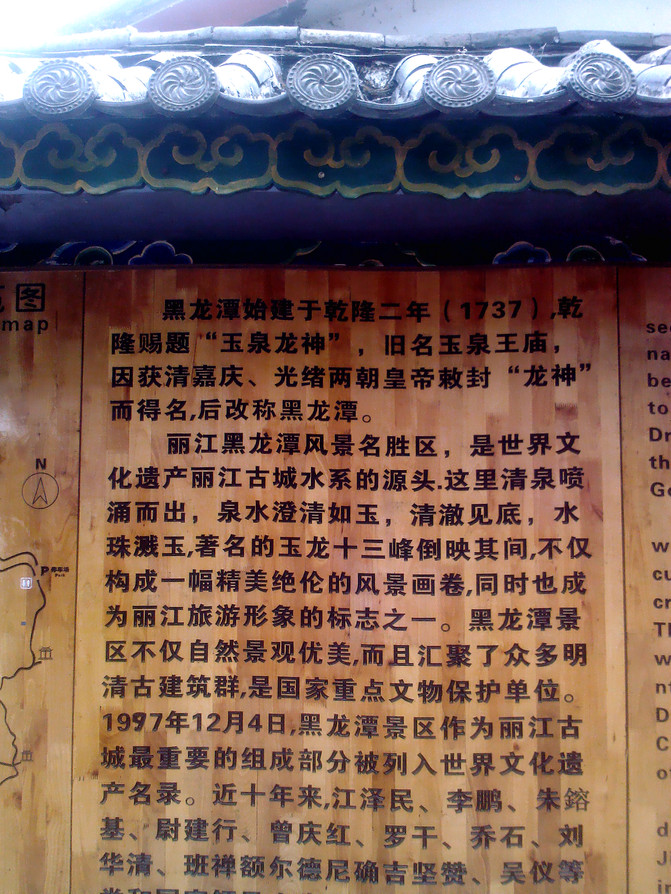

Ancient buildings include Dragon God Temple, Deyue Tower, Suocui Bridge, Yuhuang Pavilion,

As well as the Jiedanglin Gate Tower and Wufeng Tower of Zhishan Fuguo Temple in the Ming Dynasty, the Guangbi Tower of the Ming Dynasty of the former prefect's Yamen Office, and the Tingli Pavilion, Yiwen Pavilion, Wenming Square and other buildings in the Qing Dynasty that were later relocated here.


5. Lijiang Ancient City
The Ancient City of Lijiang is located in Ancient City, Lijiang City, Yunnan Province, also known as Dayan Town. It is located in the middle of Lijiang Dam. It was built in the late Song Dynasty and early Yuan Dynasty (late 13th century AD). It is located on the Yunnan-Guizhou Plateau, covering an area of 7.279 square kilometers. Lijiang is one of the second batch of approved historical and cultural cities in China. It is one of the two ancient cities in China that have successfully declared the entire ancient city for a World Cultural Heritage. The ancient city of Lijiang embodies the achievements of ancient Chinese urban construction and is one of the types of Chinese folk houses with distinctive characteristics and styles.

large water tankers

Sifang Street: It is a snack street in the ancient city. There are dozens of small restaurants on both sides of the street. Each restaurant has Yunnan's unique rice noodles and has a wide variety, so this street is also called "Lijiang Rice Noodle Street". Sifang Street is the center of the ancient city of Lijiang. It is said that it was built by Mu's Tusi in the Ming Dynasty according to the shape of its seal. This is the most important hub station on the ancient tea-horse road. Since the Ming and Qing Dynasties, merchants from all walks of life have gathered, and the cultures of various ethnic groups have gathered here. It is the center of economic and cultural exchanges in Lijiang.

This group of sculptures is called "Climbing Mountains and Wading Waters"

Chairman Mao's image
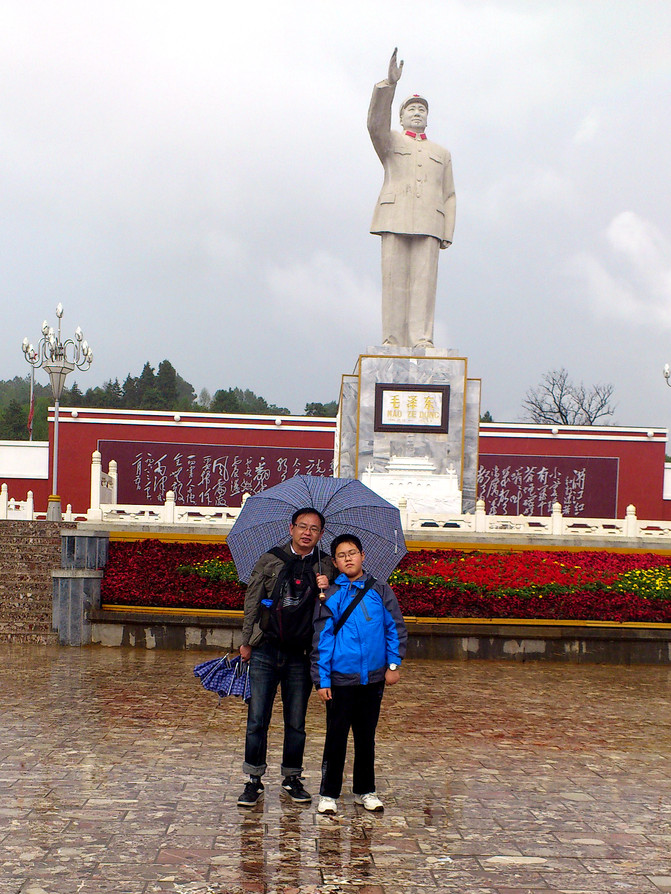
6. Lijiang's eternal love--The large-scale song and dance "Lijiang Eternal Love" is the soul of Lijiang culture. Using IMAX3D blockbuster vision, it reproduces Lijiang's thousand-year history and legends such as "The Creation of Naxi","The Daughter of Lugu","The Legend of the Horse Gang","Ancient Road and Modern Style", and "The Jade Dragon Third Country"
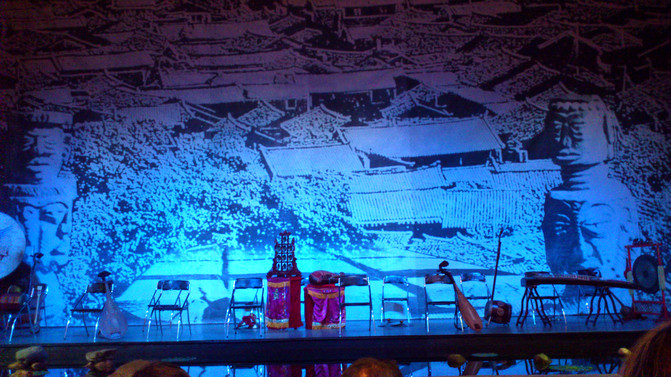
Lead the audience through the snowy mountains, in the vast and primitive wilderness, in the Mosuo Flower Tower on the Lake of Lugu, in the ancient tea-horse road with wind and rain, in the ancient town of ancient roads where man dances and sings, in the romantic and desolate Yulong Third Country, Meet a romantic encounter in Shambhala and feel a beautiful moment.

The whole drama integrates elements such as dance, acrobatics, martial arts, stage machinery, panoramic special effects, and installation art,

Through the combination of tens of thousands of sets of high-tech machinery with original ecological art, such as anti-gravity walking of the moon at high altitude, the great roc saving the ancestors, the high-altitude collision of door bars, mines, floods, waterfalls, rain curtain plank roads, and large snow-capped mountain mechanical models,

It outlines a cultural legend full of spirit and flesh, blood and tears, life and death, love and love.











7. Return to Lijiang Ancient City

Dinner in the ancient city

Day 3, Dali Xizhou Yanjia Courtyard-Chongsheng Temple
1. Visit a silver museum in Dali




2. Yan Family Courtyard
Located in Xizhou Town, Dali, Yunnan Province, it is a deep courtyard with multiple courtyards connected. Walking into the tall and complex gate with curved corners and cornices, you will find a courtyard with "three squares and one curtain". There are calligraphy and paintings on the curtain wall, and swaying flowers and trees, making people look glorious.


Behind the winding path leading to the secluded scenery is another "four-in-five-patio" compound with a unique sky. In the deepest backyard, there is quietly a Western-style villa and house. It adopts a modern architectural form and has a basement, balcony, corridor, floor-to-ceiling glass windows, surrounded by flowers and trees bonsai, giving a quiet and unique environment.

Although washed over the years, the red vermilion doors and windows and the marble carved white fences still retain their glory of the past.

It fully demonstrates the superb architectural art of the Bai people.

The Bai people make tea, and the Bai people call it "Shao Dao Zhao". This is a dramatic way of drinking tea in which guests and guests express their feelings, wish for good wishes, and is full of tea. Drinking tea was originally only used by the Bai people as a wish from their elders to their younger generations when they were studying, learning skills, doing business, and getting married. The "Chacha" song and dance performance has also become a reserved program for Dali tourism.

"Tea" symbolizes the philosophy of "one bitterness, two sweetness, and three aftertaste" in life. It has now become a tea ceremony for Bai folk weddings, festivals, and hospitality.

3. Dali Chongsheng Temple
Chongsheng Temple, facing the Erhai Lake in the east and Cangshan Mountain in the west, is located one kilometer north of the ancient city of Dali in Yunnan Province, at the foot of Diancang Mountain and on the coast of the Erhai Lake. In history, nine Dali emperors became monks in Chongsheng Temple, which was called "Tianlong Temple" in Jin Yong's martial arts novel "Eight Parts of the Dragon".
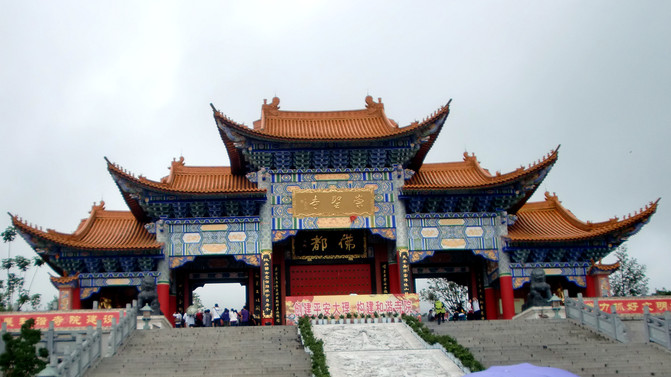
Chongsheng Temple was burned down during the Xianfeng period of the Qing Dynasty, and only the three pagodas remain intact.

The Dali Cultural Bureau spent 182 million yuan to rebuild Chongsheng Temple in 2004. The reconstruction project focuses on the protection of the three towers. On the basis of maintaining the environmental pattern of the completed Bell Tower, Rain Copper Guanyin Hall, and Front Area, the building community is divided into three axes, eight platforms, nine advanced and eleven floors.
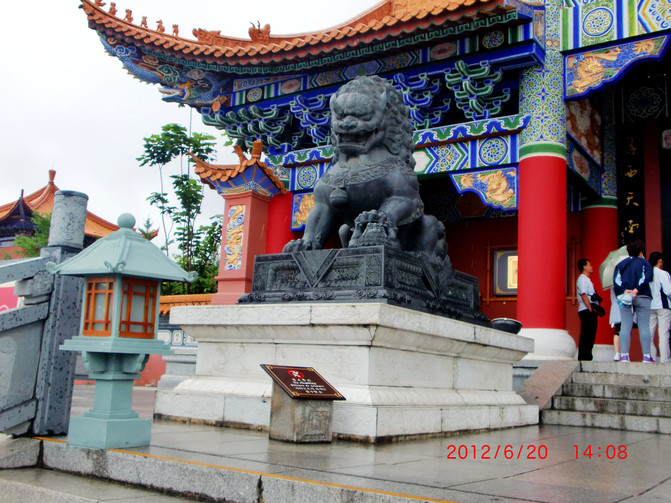
The main buildings include Golden Winged Bird Square, Mountain Gate, Dharma Hall, Maitreya Hall, Eleven-sided Guanyin Hall, Daxiong Hall, Acuoye Guanyin Pavilion, Wanghai Tower, Arhat Hall, Ancestral Hall, Thousand Buddha Corridor, etc.; The Buddha statues in each hall are based on the "Zhang Shengwen Scroll"(also known as the "Dali State Buddhist Statue Scroll"), the "Five Hundred Arhat Statues" of the Wuzhu Temple sculpted by Li Guangxiu in the Ming Dynasty, and the cultural relics found in the three pagodas. They are based on Dali's diverse cultures and Buddhist Zen Tantra. The layout and casting are based on the characteristics of the compatibility of 617 Buddha statues and ritual instruments, all cast in bronze, of which 599 are painted with gold.

The entire antique building community covers an area of 600 acres and a construction area of 20080 square meters. It belongs to the Han Buddhist temple. On April 22, 2005, the reconstruction project of Chongsheng Temple was completely completed.

The three pagodas of Chongsheng Temple are composed of these big and small ones. The big tower is called Chihiro Tower. It was built during the period of Nanzhao King Quanfengyou (824-859 AD). The distance between Chihiro Tower and the two small towers in the north and south is 70 meters, forming a three-legged tripod. The existing height of Chihiro Pagoda is 69.13 meters and the bottom width of 9.9 meters. It is a square hollow brick tower with dense eaves. It has a total of 16 levels. It is one of the tallest existing towers in China. It is the same as the Xi'an Big Goose Pagoda and the Small Goose Pagoda. A typical building in the Tang Dynasty, and is similar in shape to the Xi'an Xiaoyan Pagoda. It is one of the typical towers in the Tang Dynasty.

Day 4 Kunming Stone Forest-Colorful Yunnan
1. A jewelry store in Kunming


2. Stone Forest
It is located in Kunming Shilin Yi Autonomous County, 78 kilometers away from Kunming, the capital of Yunnan. The area covers 350 square kilometers. Shilin Scenic Area has been rated as a "World Geopark" and a "World Natural Heritage Scenery" by the United Nations Culture and Education Section. In 1982, it was approved by the State Council as one of the first batch of national-level key scenic spots. It is a national 5A-level tourist attraction and a national civilized scenic tourist area.

About 300 million years ago, the Stone Forest Scenic Area in Kunming City was a vast ocean. After a long period of geological evolution, extremely precious geological relics were finally formed, covering many karst landforms on the earth.

Changhu is a lava lake. The lake water is supplied by groundwater. It has a circumference of 5 kilometers, a width of 300 meters, and an average depth of 24 meters. The water quality is clear and pollution-free. Surrounded by green mountains, the plant coverage rate reaches more than 95%. The air is fresh and clean, with good transparency.

There are small islands in the lake, and the bank is a forest dominated by Yunnan pine. The terrain is gentle and divided into many small lakes, giving a clean and beautiful environment. It is located among mountains at an altitude of 1907 meters. The shape of the lake is like a slender girl. It is the hometown of Ashima in folklore. Because the lake is hidden among green mountains and green hills, tourists rarely visited in the past, it is also called "Tibetan Lake".
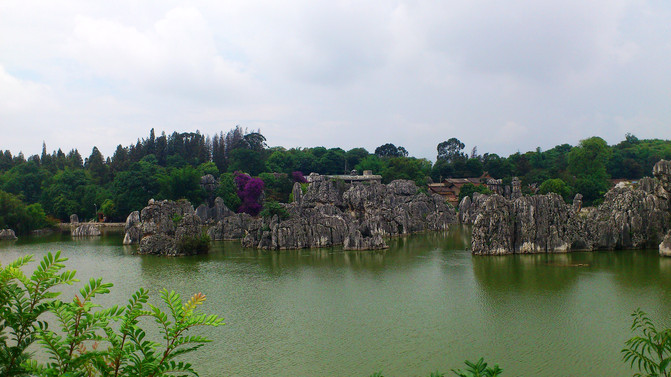
The Great Stone Forest is composed of dense stone peaks, like a gravel basin.

The stone forest here stands upright and obtrusive, with smooth lines and a light bluish-gray color. The tallest independent rock pillar is more than 40 meters high.

Among them are typical attractions such as "Lotus Peak","Sword Peak Pool","Critical Crisis","Extreme Narrow Access to People","Elephant Distance from Stone Platform","Orchid Deep Valley", and "Phoenix Combs Wings".

The most famous one is the "Stone Forest Scenic Area" where Long Yun inscribed the inscription "Stone Forest", and the "Wangfeng Pavilion" is the best place to appreciate the "forest sea".





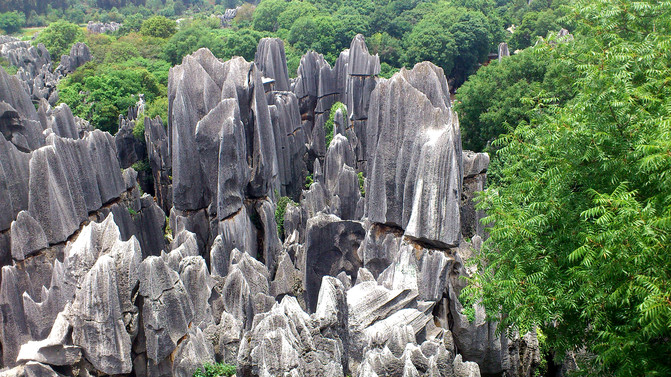













With only one hand


In the small stone forest (Ashima Scenic Area), the wide and solid stone walls are like screens, dividing the small stone forest (Ashima Scenic Area) into several gardens. The most famous scenic spot in Little Stone Forest (Ashima Scenic Area) is "Ashima"




Strength through both arms

3. An emerald shop
Statue of the Ancient Tea Horse Road

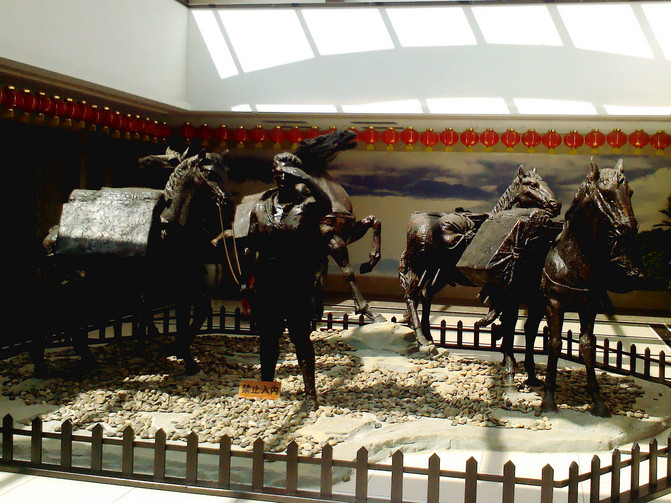

4. Colorful Yunnan




Colorful Yunnan Performance



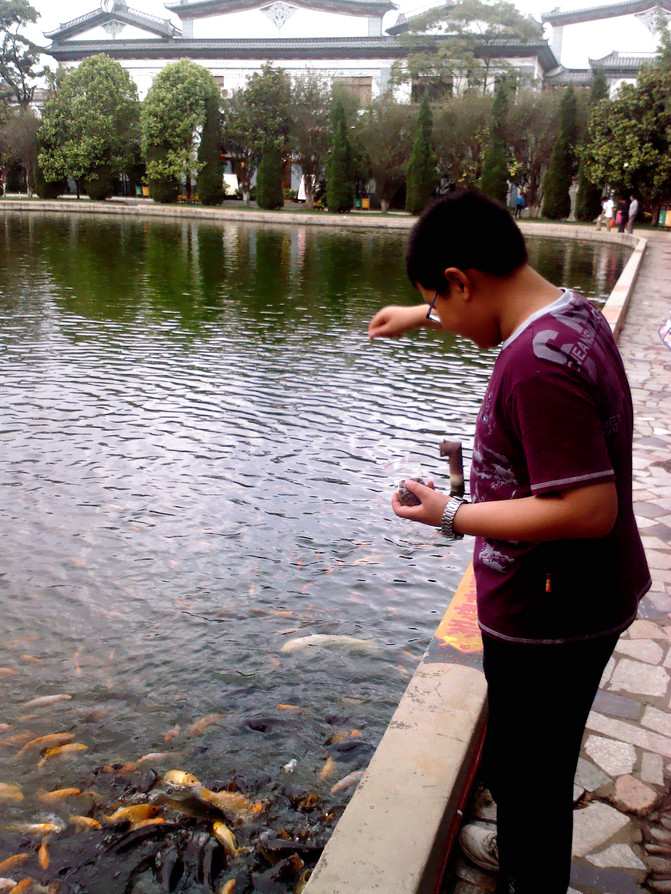


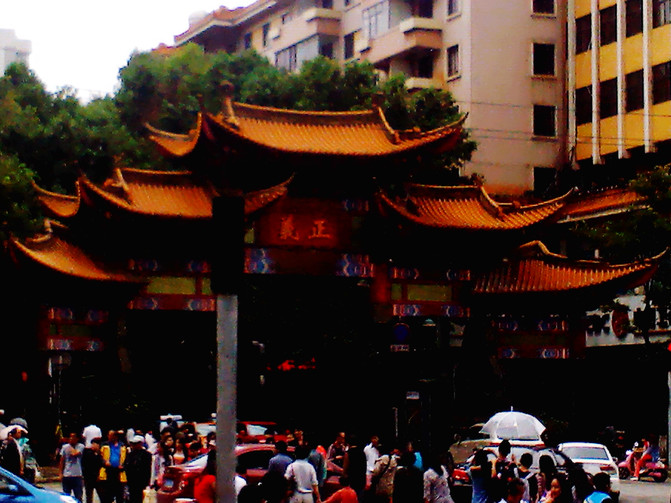
5. Stay at Xishuangbanna Hotel (not in Xishuangbanna)
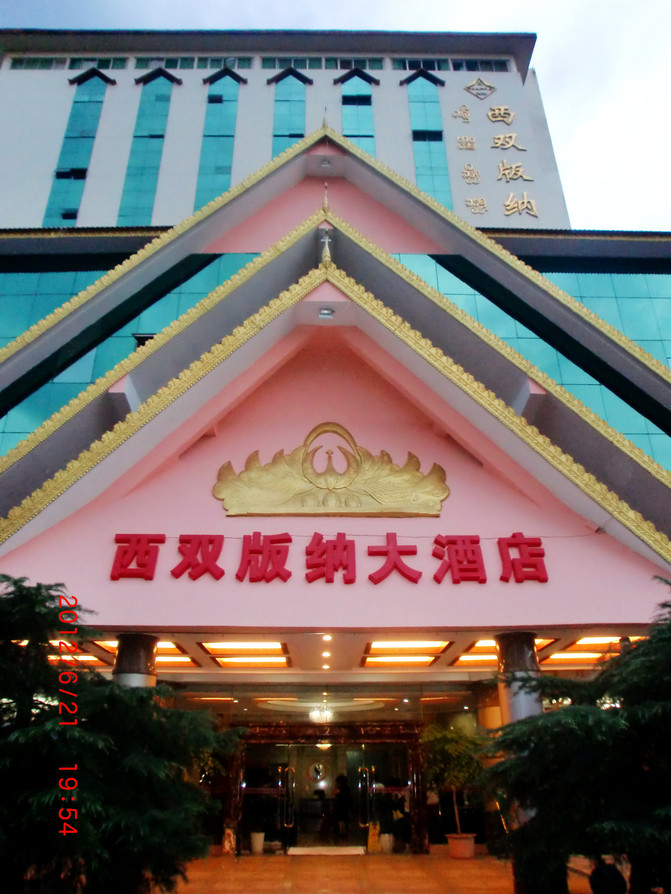
Opposite the Wyndham Hotel

Day 5 Kunming
1. Kunming Jindian Scenic Area
The foot of Mingfeng Mountain, located 7 kilometers northeast of Kunming City, is named because the main hall is cast of brass. Under the sunshine, it shines brightly, reflecting the golden light of the green valley and forest. It is also called Tongwa Temple. The prestigious Golden Hall is part of the Taoist Taihe Palace. It was built in the Ming Dynasty (1602) and is one of the four major bronze halls in China and the best preserved. In the tenth year of Kangxi (1671 AD), King Wu Sangui of Pingxi was renovated and has a long history. The Golden Hall has beautiful natural scenery, with paths passing through the forest, green trees blocking the sky and the sun, and occasionally birds sing, which is deeply rooted in the essence of Taoist culture.
Cross Yingxian Bridge and enter the "Mingfeng Shengjing" Square,

Walk from the foot of the mountain and pass the "First Gate","Second Gate" and "Third Gate".

Climbing the Tianmen, you can see the simple and solemn gate of the "Taihe Palace".
Lianyun: "Painting buildings and connecting clouds only occupy three acres of green mountains; Zhu buildings reflect the sun, so don't open a green sky."

Enter the temple gate and then pass through the Lingxing Gate
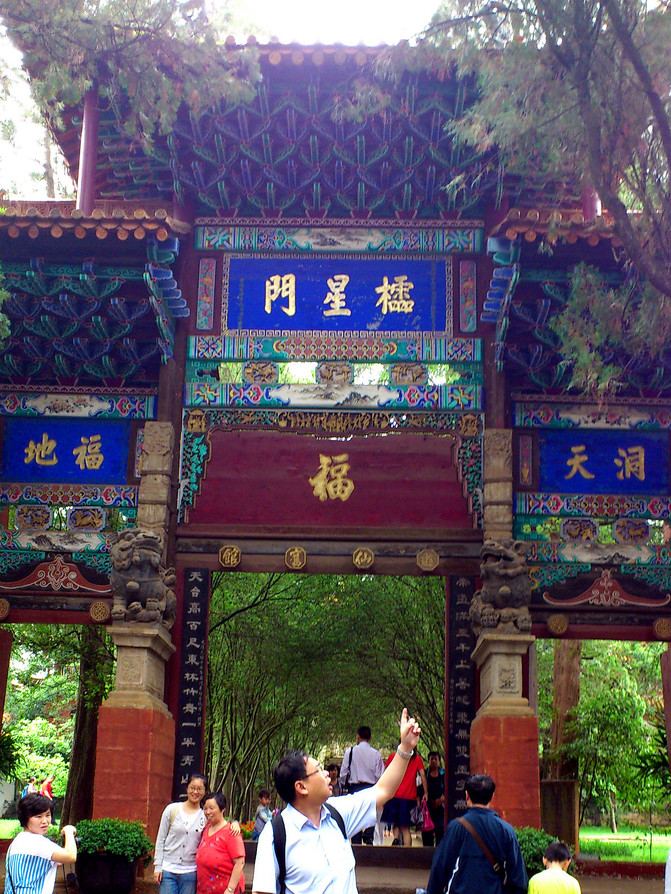

Follow the steps into the "city", and face the high steps,

It is the central building of Taihe Palace, the famous Golden Hall.





Is this Chen Yuanyuan?

The park is full of bronzes.






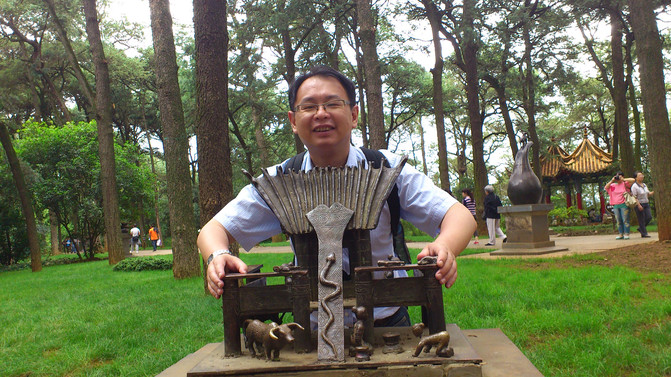

bell tower



Ring the bell to pray for blessings


Bell Tower can see Kunming city

What's Dad thinking?



2. Kunming Cuihu Park:Located at the foot of Luofeng Mountain in the north of Kunming City, opposite the main entrance of Yunnan University (the picture below shows the right side of Qinglai Hall of Donglu Campus of Yunnan University), it is one of the most beautiful parks in the city. Although the area is not large, it is very distinctive. It was originally a bay in Dianchi Lake, but later became a Wangqing Lake due to the drop of water level. Since the Ming Dynasty, successive Yunnan administrative officials have built pavilions and buildings here. Because weeping willows and clear water constitute its main characteristics, it was officially named Cuihu at the beginning of this century.

It is famous for its "Green Dike Spring Dawn". People call it "an emerald inlaid in the city of Kunming."

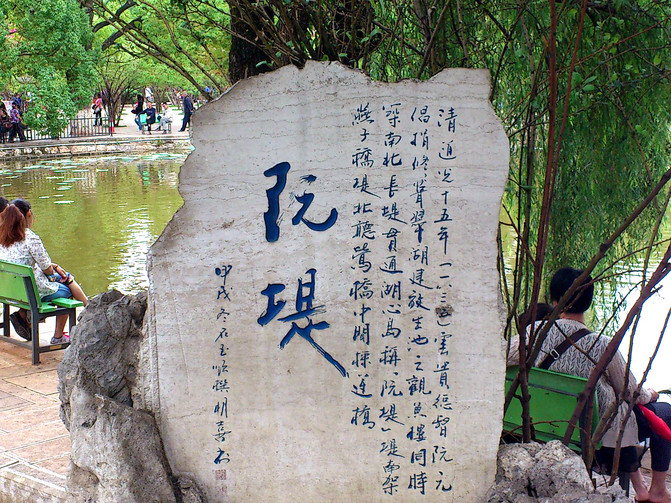
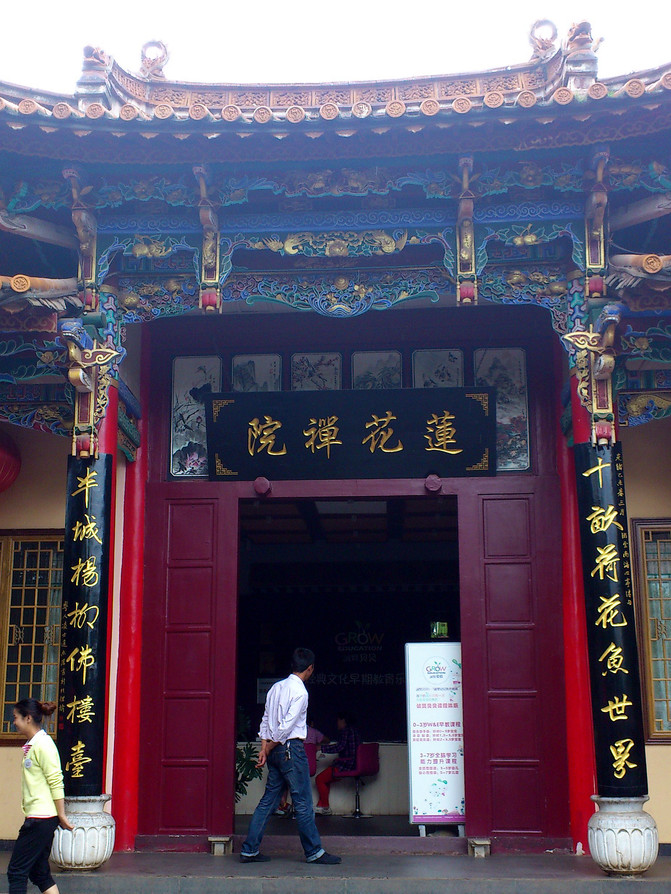




Car rental in Kunming City, ran into a talent selection scene

Conclusion:The five-day itinerary was full and I saw countless natural scenery, historical buildings, and several performances. Among them, the most beautiful natural scenery was the Yulong Snow Mountain, and the exquisite ancient buildings were the Xizhou houses (although Chongsheng Temple was grand, it was an antique building). The most exciting part of the performance was the impression of Lijiang.But the happiest thing is the strong parent-child love!!!
Previous Article:Take a flight and travel, and encounter a landscape adventure in the Dongba Secret Realm of Lijiang
